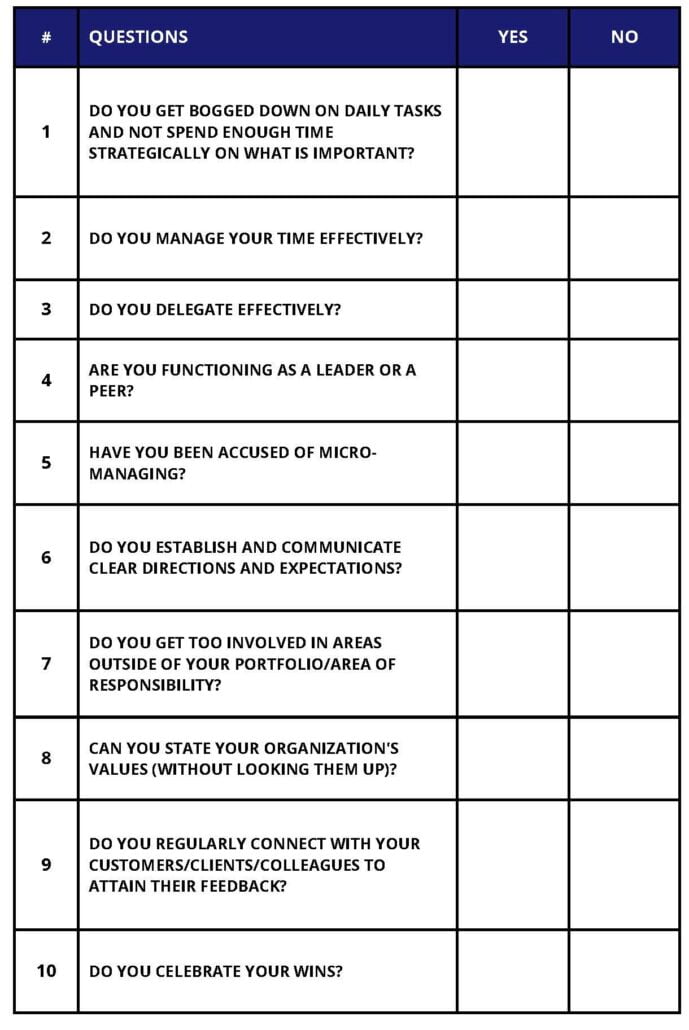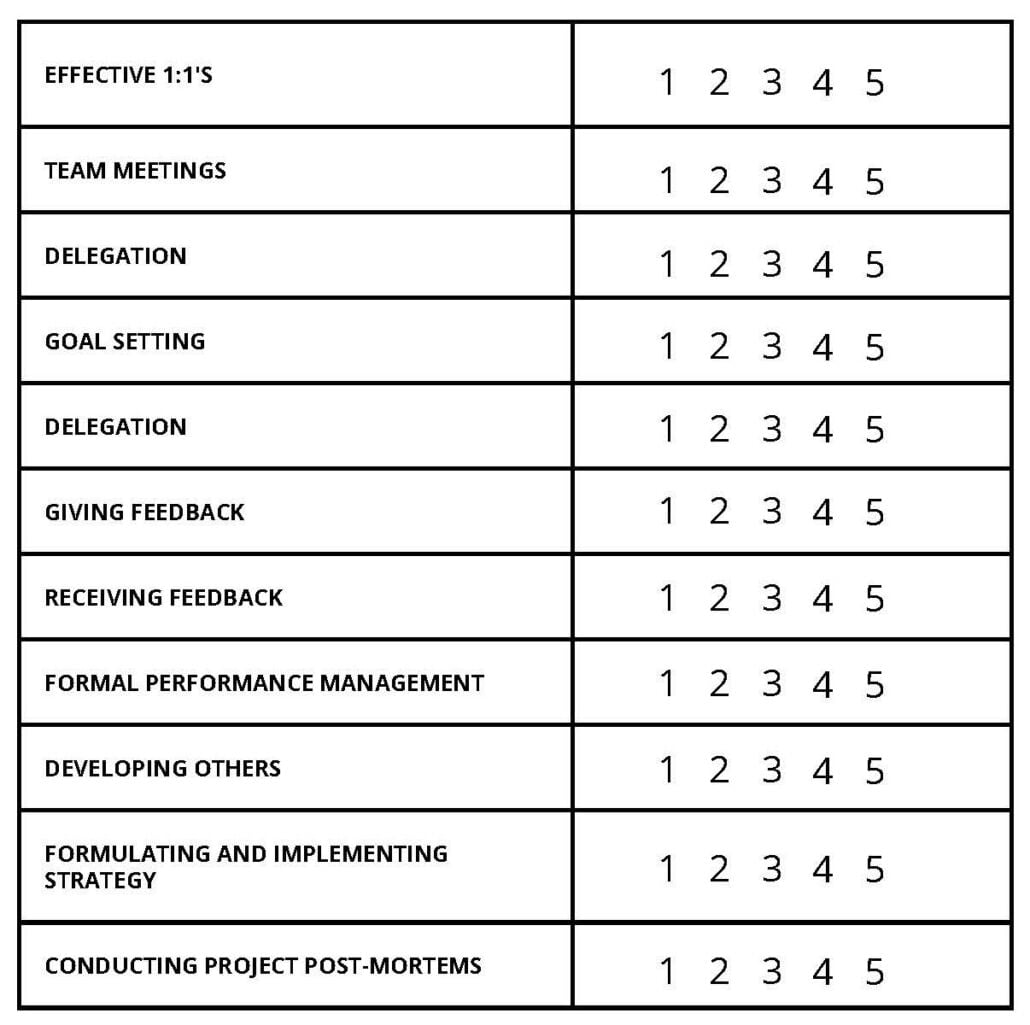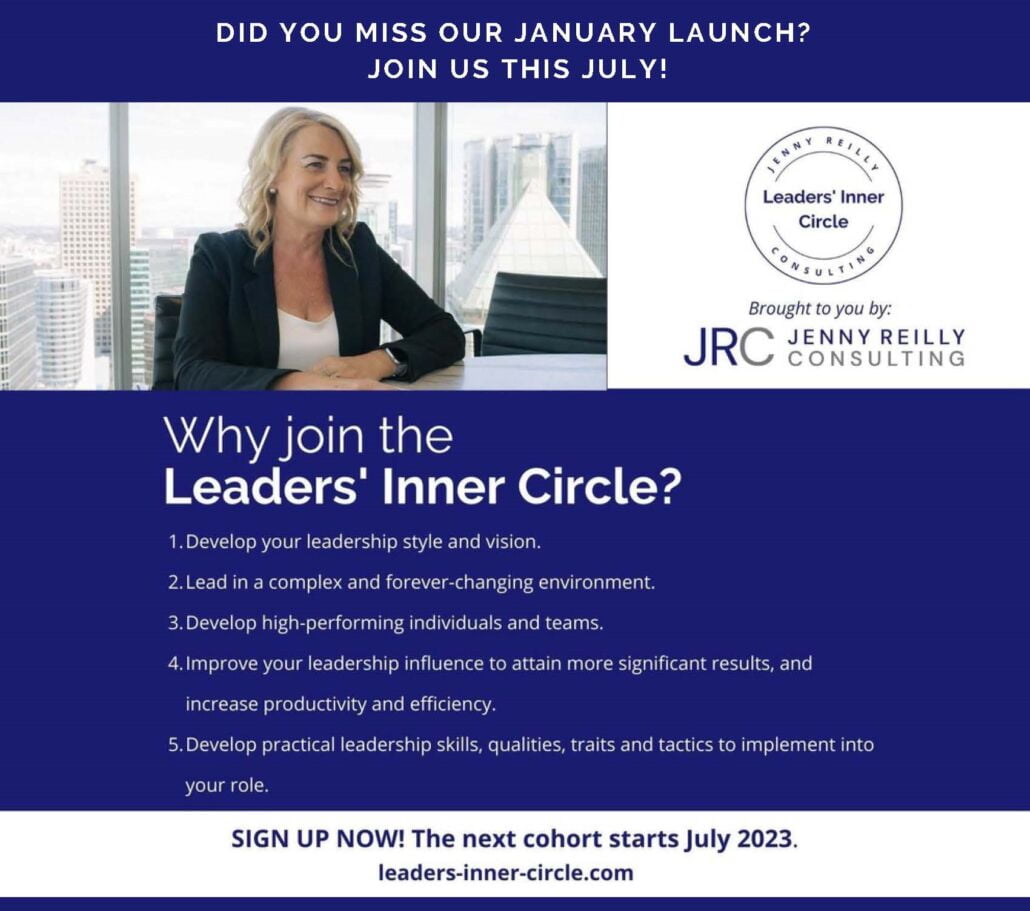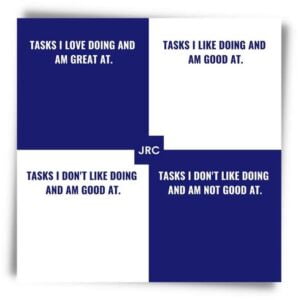Leadership Tools For Your Day-To-Day
I am sharing two leadership tools with you to help you focus on your role.
- A brief questionnaire to help you identify your leadership focus.
- A self-ranking assessment to assist you with your core leadership activities.
Tool 1: How is Your Leadership Focus?
STEP 1: Answer the following ten questions in the questionnaire below with a yes or no answer.
STEP 2: Prioritize your ‘yes’ answers in order of what would help you most in your role if improved.
STEP 3: Select the top three, and list one thing you can do in each area to improve. These are your top 3 areas to focus. Implement these actions into your schedule to follow through to ensure improvement.

Tool 2: Your Core Leadership Activities
Leadership requires continual development. Competencies can be strengthened when managing yourself and your team and supervising managers, leads and senior leaders.
HOW DO YOU RATE YOURSELF ON YOUR CORE LEADERSHIP ACTIVITIES?
Step 1: Rate yourself on a scale of 1 (being low) – 5 (being excellent) on the following.
Step 2: In areas where you are rating yourself low, prioritize improvement for next month.

If you have any questions about these leadership tools or want to learn more on the powerful benefits of executive coaching to elevate your leadership success, please contact us, or reach out directly to jenny@jennyreilly.com and book a complimentary 30-minute strategy session.




